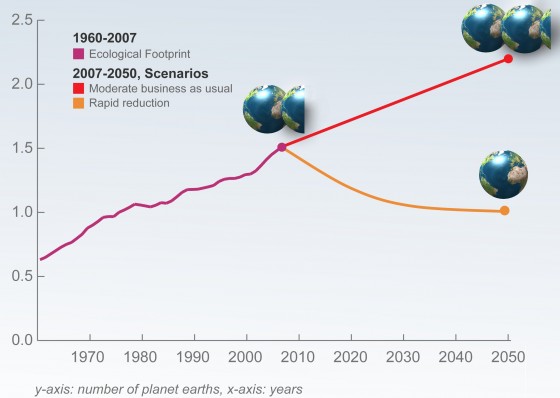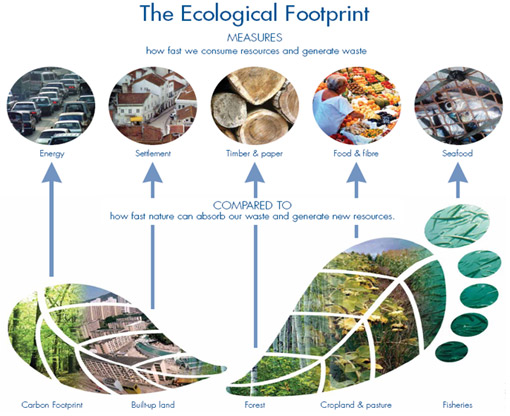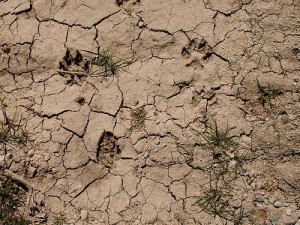When looking for country-specific environmental indicators, it is often difficult to find a single indicator that holistically summarizes the environmental situation in a tractable and visual manner. This is the first part of two articles (the second one on your water footprint is here). Two interactive environmental info graphics will be explored to help you better understand what is happening in our green planet, what you can do to change your habits for a greener future and which environmental issues need special attention. Let’s start with your ecological footprint and biocapacity.
Ecological footprint and Biocapacity:
The Ecological Footprint measures how much land and water area a human population requires to produce the resource it consumes and to absorb its carbon dioxide emissions. It is measured in global hectares per capita, where the global hectare (gha) is normalized to the area-weighted average productivity of the specific land type for that year.
This normalization process is essential because each land type has a different productivity levels or yield factor (more formally called biocapacity), which needs to be taken into account to ensure “footprints” can be compared globally.
A global hectare of cropland, for example, occupies a smaller area than pasture land, because cropland is much more biologically productive. Conversely a larger area of pasture is needed to provide the same biocapacity as one hectare of cropland.
Ecological deficit or reserve:
The total Ecological Footprint minus the Total Biocapacity of a country is equal to the Ecological deficit or reserve (depending on whether Ecological footprint is greater of smaller than total Biocapacity).
So, if there is a regional or national ecological deficit, it means that the region is essentially importing biocapacity through trade.
A global deficit, however, cannot be compensated through trade and therefore leads to a global overshoot of resources resulting in depletion of natural capital.
The global results are predictable and worrying:
“Since the 1970s, humanity has been in ecological overshoot with annual demand on resources exceeding what Earth can regenerate each year. It now takes the Earth one year and six months to regenerate what we use in a year.”
“There are only 15.71 global hectares available per person on a renewable basis. Currently, we are overshooting the Earth’s biological capacity by nearly 50%. To sustain present levels of consumption, we would need: 1.5 Earths.”
To get a more detailed overview of the current global situation, the global footprint network has presented calculations of the National Accounts (2010) in the Ecological Footprint Atlas , Annual Reports are also great resources for country specific data . A really great interactive map visually tracks the Ecological Footprint and Biocapacity for each country through time.
These sources of information are crucial because they allows us to essentially point fingers at countries or regions that have the responsibility to compensate and offset the ecological pressures they are imposing at the global scale. How this offsetting should be done is obviously a little more complicated but at least we know who is responsible, as it were.
In fact:
“After the UAE was ranked as having the highest per person Ecological Footprint, the local government launched an ambitious Ecological Footprint Initiative. The UAE is now investing US $15 billion towards developing clean energy.”
How many “earths” does it take to support your lifestyle?
Environmental responsibility also comes at an individual and personal level. Take this very quick quiz that calculates your personal ecological footprint and how many “earths” would be required if the entire human population were to adopt your consumption patterns.
Not only will you be surprised by the results, but you will also start to think more about what you can do to minimize your footprint.
**For more detailed analysis on how the Human Development Index correlates with the Ecological footprint through time there is the “Trendalyzer” tool which allows you to select different variables and view trends through time for all countries and regions.






http://fresh-fruits-and-veggies.com/
Keep Produce Fresh Longer, The Environmentally Friendly Way